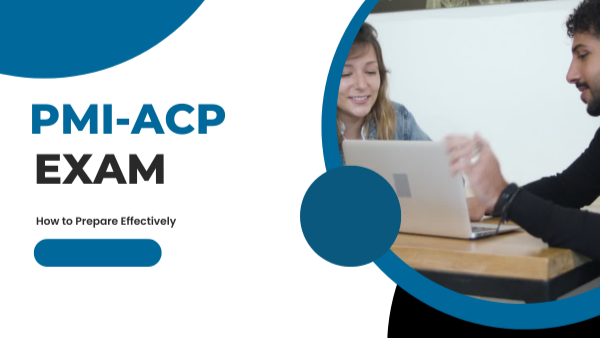
Mastering User Stories in Agile Projects: Key to Successful Development
Are you struggling to keep your development team on track? Do you find it hard to communicate project requirements effectively? You're not alone. Many project managers and product owners face these challenges daily. But there's a solution that can make your life easier: user stories.
Table of Contents
- What are user stories?
- Why user stories matter
- How to write effective user stories
- Keep it simple
- Focus on the user
- Be specific
- Include acceptance criteria
- Use the invest criteria
- Common pitfalls and how to avoid them
- Writing technical stories
- Making stories too big
- Forgetting the "why"
- Ignoring non-functional requirements
- Not involving the whole team
- Advanced techniques for user story mastery
- Story mapping
- User personas
- Impact mapping
- Behavior-driven development (bdd)
- Wrapping up: the power of user stories
In this blog post, we'll dive into the world of user stories and show you how they can transform your Agile projects. We'll cover everything from the basics to advanced techniques, helping you become a master of this essential Agile tool.
What Are User Stories?
Let's start with the basics. User stories are short, simple descriptions of a feature told from the user's perspective. They typically follow this format:
"As a [type of user], I want [some goal] so that [some reason]."
For example:
"As a busy parent, I want to order groceries online so that I can save time and avoid going to the store with my kids."
This simple format packs a powerful punch. It tells us who the feature is for, what they want to do, and why it's important to them. It's a game-changer for how we think about and plan our projects.
Why User Stories Matter
You might be wondering, "Why should I care about user stories?" Well, here's the deal:
1. They put the user first: User stories force us to think from the user's perspective. This helps us create products that people actually want to use.
2. They promote collaboration: User stories are easy to understand, making it simpler for team members from different backgrounds to work together.
3. They're flexible: Unlike rigid requirements documents, user stories can easily adapt as we learn more about what users need.
4. They help prioritize: By focusing on user value, stories make it easier to decide what features are most important.
5. They break work into manageable chunks: User stories help teams tackle complex projects by breaking them down into smaller, doable pieces.

How to Write Effective User Stories
Now that you know why user stories are so valuable, let's talk about how to write them well. Here are some tips to help you create user stories that will supercharge your Agile projects:
Keep It Simple
Remember, the goal is clear communication. Use plain language that everyone can understand. Avoid jargon or technical terms unless absolutely necessary.
Focus on the User
Always start with the user. Who are they? What do they need? Why do they need it? This user-centric approach will help you create features that truly matter.
Be Specific
While user stories should be brief, they shouldn't be vague. Include enough detail to give the team a clear direction. For example:
"As a customer, I want to sort products by price so that I can find items within my budget."
Include Acceptance Criteria
Acceptance criteria are the conditions that must be met for the story to be considered complete. They help prevent misunderstandings and ensure everyone is on the same page. For example:
-
Products can be sorted from low to high price
-
Products can be sorted from high to low price
-
The current sort order is clearly displayed
Use the INVEST Criteria
A good user story should be:
-
Independent: Can be developed separately from other stories
-
Negotiable: Details can be discussed and changed
-
Valuable: Provides value to the user or customer
-
Estimable: The team can estimate the effort required
-
Small: Can be completed in one sprint
-
Testable: Clear criteria for when it's done
Common Pitfalls and How to Avoid Them
Even with the best intentions, it's easy to make mistakes when writing user stories. Here are some common pitfalls and how to steer clear of them:
Writing Technical Stories
Remember, user stories are about the user, not the technology. Instead of "As a system, I want to log errors," try "As a support technician, I want to see error logs so I can quickly identify and fix issues."
Making Stories Too Big
Big stories are hard to estimate and complete in a single sprint. If a story feels too big, break it down into smaller, more manageable pieces.
Forgetting the "Why"
The "so that" part of a user story is crucial. It provides context and helps the team make better decisions. Don't skip it!
Ignoring Non-Functional Requirements
Not all stories are about features. Remember to include stories for things like performance, security, and usability.
Not Involving the Whole Team
User stories work best when the whole team is involved in creating and refining them. Don't leave it all to the product owner.
Advanced Techniques for User Story Mastery
Ready to take your user story skills to the next level? Try these advanced techniques:
Story Mapping
Story mapping is a visual technique that helps you organize user stories into a helpful model for understanding the functionality of the system. It can help you see the big picture and identify gaps in your backlog.
User Personas
Create detailed user personas to help your team better understand and empathize with your users. This can lead to more accurate and valuable user stories.
Impact Mapping
This technique helps you connect your user stories to larger business goals. It can be a powerful tool for prioritization and decision-making.
Behavior-Driven Development (BDD)
BDD takes user stories a step further by adding specific scenarios that describe how the feature should behave. This can lead to clearer requirements and better test coverage.
Wrapping Up: The Power of User Stories
User stories are more than just a way to write requirements. They're a powerful tool that can transform how you think about and approach your projects. By putting the user at the center of everything you do, you'll create products that people love to use.
Remember, mastering user stories takes practice. Don't be discouraged if your first attempts aren't perfect. Keep refining your approach, involve your team, and always keep the user in mind. With time and effort, you'll become a user story pro, leading your Agile projects to success.
So, are you ready to revolutionize your Agile projects with user stories? Give these techniques a try and see the difference they can make. Your users (and your team) will thank you!

About Anita Ankam
Anita Ankam – Expert Project Management Instructor
Anita Ankam is a highly experienced and certified project management instructor, specializing in globally recognized methodologies such as PMP®, PMI-ACP®, DASM®, and DASSM®. With an extensive academic background, including an MBA and MSc, Anita holds multiple industry-leading certifications, including PRINCE2, PRINCE2 Agile Practitioner, CSM, ASM, ITIL, and Six Sigma Black Belt.
As an authorized training instructor, Anita has guided countless professionals in mastering project management frameworks and agile practices. Know more.
Related Posts

Featured Links
Contact us
- PMP® Certification Course |
- CAPM Certification Course |
- PMP Certification Training in Mumbai |
- PMP Certification Training in Pune |
- PMP Certification Training in Hyderabad |
- PMP Certification Training in Delhi |
- PMP Certification Training in Chennai |
- PMP Certification Training Course in Ahmedabad |
- PMP Certification Training Course in Bangalore |
- PMP Certification Training Course in Bhubaneswar |
- PMP Certification Training Course in Chandigarh |
- PMP Certification Training Course in Gandhinagar |
- PMP Certification Training Course in Faridabad |
- PMP Certification Training Course in Dombivli |
- PMP Certification Training Course in Coimbatore |
- PMP Certification Training Course in Ghaziabad |
- PMP Certification Training Course in Gurgaon |
- PMP Certification Training Course in Indore |
- PMP Certification Training Course in Jaipur |
- PMP Certification Training Course in Mysore |
- PMP Certification Training Course in Lucknow |
- PMP Certification Training Course in Kolkata |
- PMP Certification Training Course in Kochi |
- PMP Certification Training Course in Nagpur |
- PMP Certification Training Course in Navi Mumbai |
- PMP Certification Training Course in Patna |
- PMP Certification Training Course in Pimpri |
- PMP Certification Training Course in Vadodara |
- PMP Certification Training Course in Trivandrum |
- PMP Certification Training Course in Thane |
- PMP Certification Training Course in Surat |
- PMP Certification Training Course in Noida |
- PMP Certification Training Course in Visakhapatnam |
- PMP® Certification Training Course in Doha |
- PMP Certification Training in New York |
- PMP Certification Training Course in Chicago |
- PMP Certification Training in Austin |
- PMP Certification Training in Minneapolis |
- PMP Certification Training in Atlanta |
- PMP Certification Training in Dallas |
- PMP Certification Training in San Diego |
- CAPM Certification Training in Mumbai |
- CAPM Certification Training in Bangalore |
- CAPM Certification Training in Hyderabad |
- CAPM Certification Training in Delhi |
- CAPM Certification Training in Pune |
- CAPM Certification Training in Chennai |
- CAPM certification Training in Kolkata |
- CAPM certification Training in Gurgaon |
- CAPM certification Training in Noida |
- CAPM Certification Training in Ahmedabad |
- PMI Certified Professional in Managing AI (PMI-CPMAI)™ |
- PMI-RMP - PMI Risk Management Professional |
- PMI-PMOCP - PMI® Project Management Office Certified Professional
- AZ-900: Microsoft Azure Fundamentals |
- AZ-104: Microsoft Azure Administrator |
- AZ-204: Developing Solutions for Microsoft Azure |
- AZ-305: Designing Microsoft Azure Infrastructure Solutions |
- AZ-400: Designing and Implementing Microsoft DevOps Solutions |
- AZ-500: Microsoft Azure Security Technologies |
- AI-900: Microsoft Azure AI Fundamentals |
- DP-900: Microsoft Azure Data Fundamentals |
- CLF-C02: AWS Certified Cloud Practitioner |
- GCP-FC: Cloud Digital Leader |
- GCP-ACE: Associate Cloud Engineer |
- GCP-PCA: Professional Cloud Architect |
- GCP-PCD: Professional Cloud Developer |
- GCP-PCE: Professional Cloud DevOps Engineer |
- GCP-PDE: Professional Data Engineer |
- GCP-PCNE: Professional Cloud Network Engineer |
- GCP-PCSE: Professional Cloud Security Engineer |
- GCP-ML: Professional Machine Learning Engineer |
- GCP-PBA: Professional Business Intelligence Analyst |
- DP-100: Designing and Implementing a Data Science Solution on Azure |
- DP-203: Data Engineering on Microsoft Azure
- PMP® is a registered mark of the Project Management Institute, Inc.
- CAPM® is a registered mark of the Project Management Institute, Inc.
- PMI-ACP® is a registered mark of the Project Management Institute, Inc.
- Certified ScrumMaster® (CSM) ia a registered trademark of SCRUM ALLIANCE®
- While we strive to ensure that all prices listed on our website are accurate, we reserve the right to modify them at any time without prior notice.
Copyright © Certifyera Consulting Services. All Rights Reserved | Designed and Developed by WebAnaya
.png)

